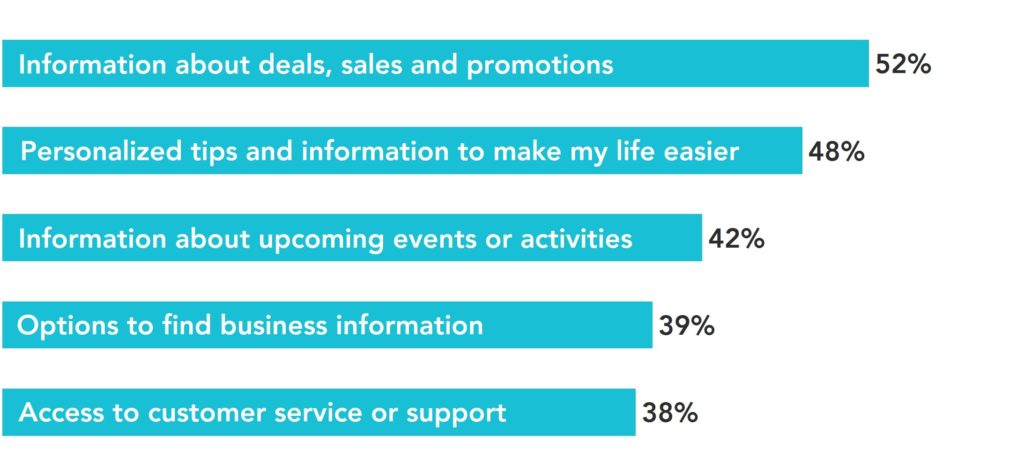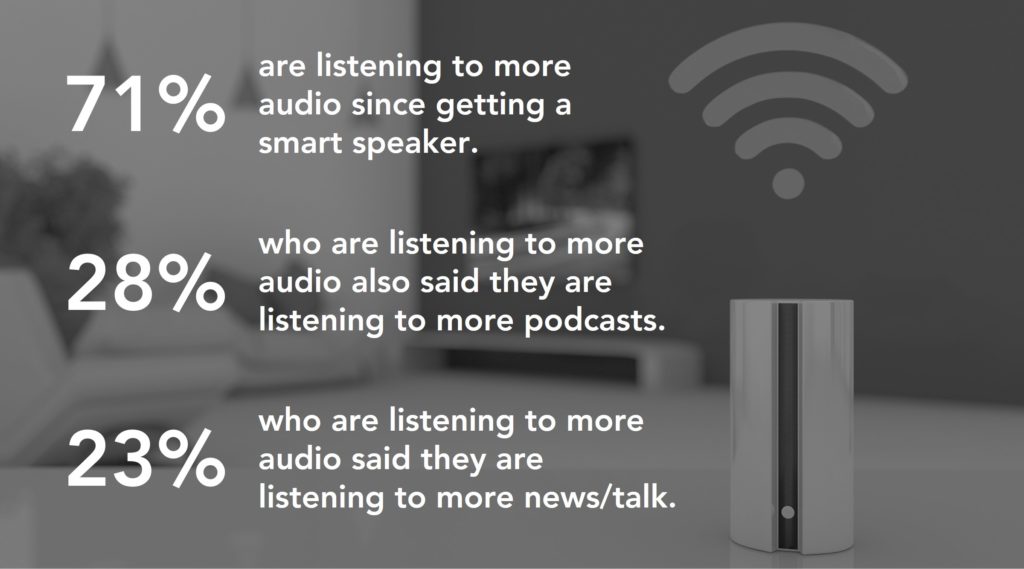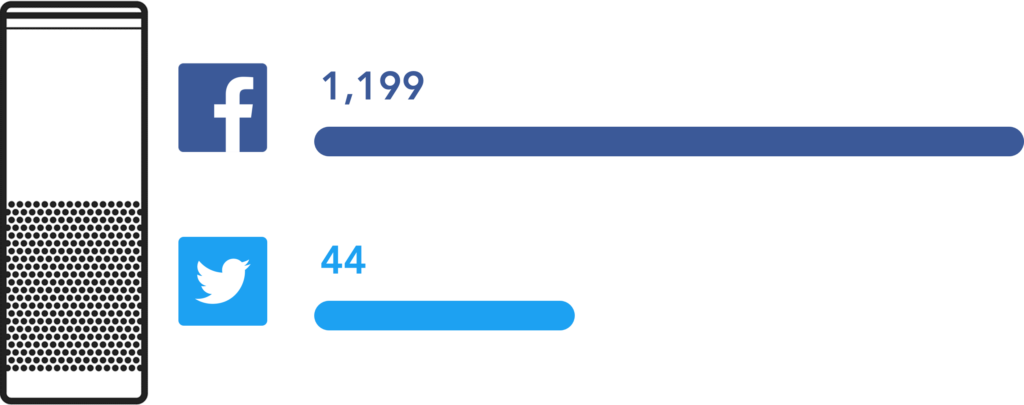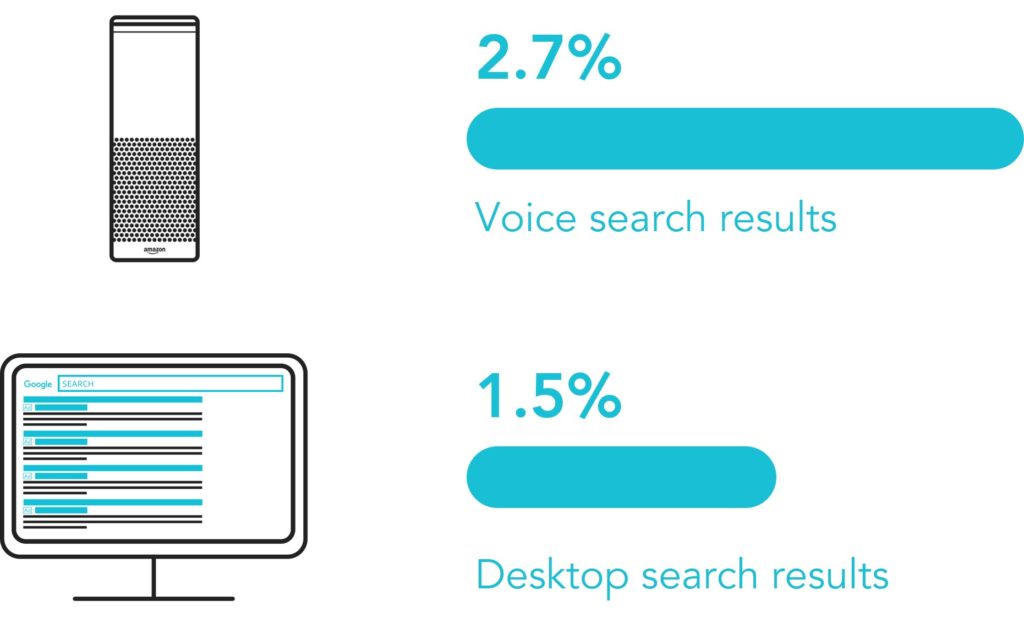5 Ways Your Brand Can Use Content Marketing to Connect with Smart Speaker Users
Welcome to the second post in our series on how brands can reach smart speaker owners. In the first post, we provided some background on smart speakers and voice search in general. In this post, we’ll start diving into specific strategies brands can employ to connect with smart speaker users.
An increasing number of smart speaker owners and the rising popularity of voice search have made it crucial for brands to implement strategies to reach these growing audiences. This will require a comprehensive digital marketing approach involving content creation, search engine optimization (SEO), paid advertising, app/skill development and more.
Consumers and smart speaker devices are in a honeymoon phase of sorts, still trying to define the relationship and how best to use the device. In general, smart speaker owners want the devices to automate tasks, help them find information and make their lives easier. As that relationship evolves, brands like yours will need to keep up with how consumers are using smart speakers.
Related – Check out our latest infographic to learn more about how smart speaker owners are using their devices
For now, when consumers do turn to smart speakers to learn about products and services, it’s important that your brand is there to provide the information they need. To accomplish this, let’s look at five strategies to create content for smart speaker audiences.
No. 1: Create the type of content that users want
Some of the most popular ways consumers use smart speakers don’t really present much of an opportunity for brands. Activities like playing music, setting timers and checking the weather aren’t really suited for most brands to create content that connects with users. However, there’s a variety of information smart speaker owners have said they would like to receive from brands.
What smart speaker owners would like from brands

Source: Google
No. 2: Create content that matches the way users interact with smart speakers
Going a step further, it’s important not just to deliver the type of content smart speakers users want, brands also need to provide that content in the right tone and voice. By that, I don’t mean swapping out the tranquil rhythm of Alexa’s standard voice with the aggressively-loud pitch of Gordon Ramsay or the awkwardly-suggestive tone of Rebel Wilson; I mean creating content that matches how users interact with smart speakers.
Users tend to interact differently with smart speakers than other digital devices like smartphones and computers. According to Google, 53 percent of people who own a voice-activated speaker said it feels natural speaking to it, with 41 percent saying it feels like talking to a friend or another person.
When consumers use voice search on any device, natural interaction remains the norm. Almost 70 percent of requests to the Google Assistant – which runs on Google Home, smartphones, cars and other devices – are expressed in natural language, not the typical keywords people would use when typing out a search.
This leads to a style of communication that is more natural, conversational and informal – which impacts how digital assistants determine voice search results. A study analyzed 10,000 Google Home searches and found that the average search result was content written at a ninth-grade reading level.
So, if you’re creating content designed to reach smart speaker users, don’t be afraid to be more colloquial, use more rudimentary verbiage and definitely avoid using words like colloquial and rudimentary.
Related – How Multi-Location Brands Can Optimize for Voice Search
No. 3: Create more audio content
When creating content for smart speaker devices, brands should remember the inherent role these devices play – speakers. One way your brand can provide audio content is by starting a branded podcast. Talk about general interest topics that are germane to your industry and provide consumers the information they need to make purchase decisions related to your products and services.
Smart speaker owners

No. 4: Create high-quality content
This should really go without saying, but if your brand wants to reach smart speaker owners and persuade them to become customers, it’s important that the content you put out is high-quality, relevant and engaging. This is especially true if your brand is looking to rank in the top spot in voice searches (which is crucial given there’s only one result).
Let’s go back to that study mentioned above that analyzed Google Home searches. The study found that the average domain rating of a voice search result was an impressive 76.8 and higher domain ratings are associated with a higher likelihood of ranking well in search results.
Domain rating is determined, in part, by how many quality incoming links a website has from other sites, and links are considered to be one of the most important (if not the most important) factor in search engine rankings.
Search engines see incoming links as votes of confidence for a website since other site owners must think the content is interesting and/or authoritative or they wouldn’t link to it. So, publishing high-quality content increases the chances of getting other sites to link to your pages which leads to higher rankings in search results.
Great content also generates social engagement. While Google has said that social signals don’t factor into their rankings, there’s definitely a strong correlation between the social engagement of a content piece and its performance in voice search results. This correlation is evident by the average number of Facebook and Twitter shares of voice search results. (For comparison, half the content on the web gets two Facebook shares or less.)

No. 5: Create long-form, in-depth content
For years, a common SEO strategy was to create individual pages for each topic in hopes of ranking for keywords that were exclusive to that subject. However, this practice may not be the most effective at reaching voice searchers.
To understand why, let’s go back to that Google Home search study. The researchers of that study found the average word count of a Google voice search result is more than 2,300 words. On top of that, the study concluded that using specific keywords in a page’s title tag had very little influence on search rankings.
So, what does all of this mean?
For voice search results, this means it may be more effective to create webpages that cover multiple subjects and satisfy a variety of potential queries. The study presented a reasonable explanation for this reverse in SEO best practices:
Approximately 20 percent of all mobile searches are now voice searches (and according to Comscore, 50 percent of all searches will be voice searches by 2020). With so many voice searches, it’s impossible for Google to find a page dedicated to every query. Instead, Google explores the entire page for the best match for that particular voice search.
Luckily, brands don’t have to recreate the wheel to develop more comprehensive pages. In fact, a lot of websites already host pages that accomplish this goal – FAQ pages. For Google Home searches, 2.7 percent of results were FAQ pages. That might not sound like a lot, but it’s almost double the percentage of FAQ results in desktop searches.
Search results that are FAQ pages

FAQ pages answer a variety of specific questions making it very easy for search engines to understand the page’s content and present responses via voice search results. Also, FAQs are a great way to offer quick answers while also linking out to other pages on your site to provide more in-depth information. So, if your brand has already created a lot of hyper-specific pages, don’t toss them in the trash. Instead, just link to them from more comprehensive pages. That way, you’ll be covered for voice search and standard search results.
Want to create great content pieces to improve your brand’s performance in voice search results? Contact Mindstream Media Group to learn how our Content Marketing solution can help.
Subscribe to our blog for upcoming posts on strategies for reaching smart speaker users.
More from Mindstream Media Group

Meet the Mindstreamer – Chandler Swanner
Chandler Swanner’s interest in advertising dates back to her childhood. Her mother (and role model in life) was a Media […]

Third-Party Cookie Phase-Out: What Marketers Need to Know
Cookies are an essential part of internet usage, allowing websites to remember you and provide a more personalized experience. This […]

Meet the Mindstreamer – Kaya Bucarile
She plans and oversees media strategy for agency clients, working closely with project and platform managers to ensure that we […]
